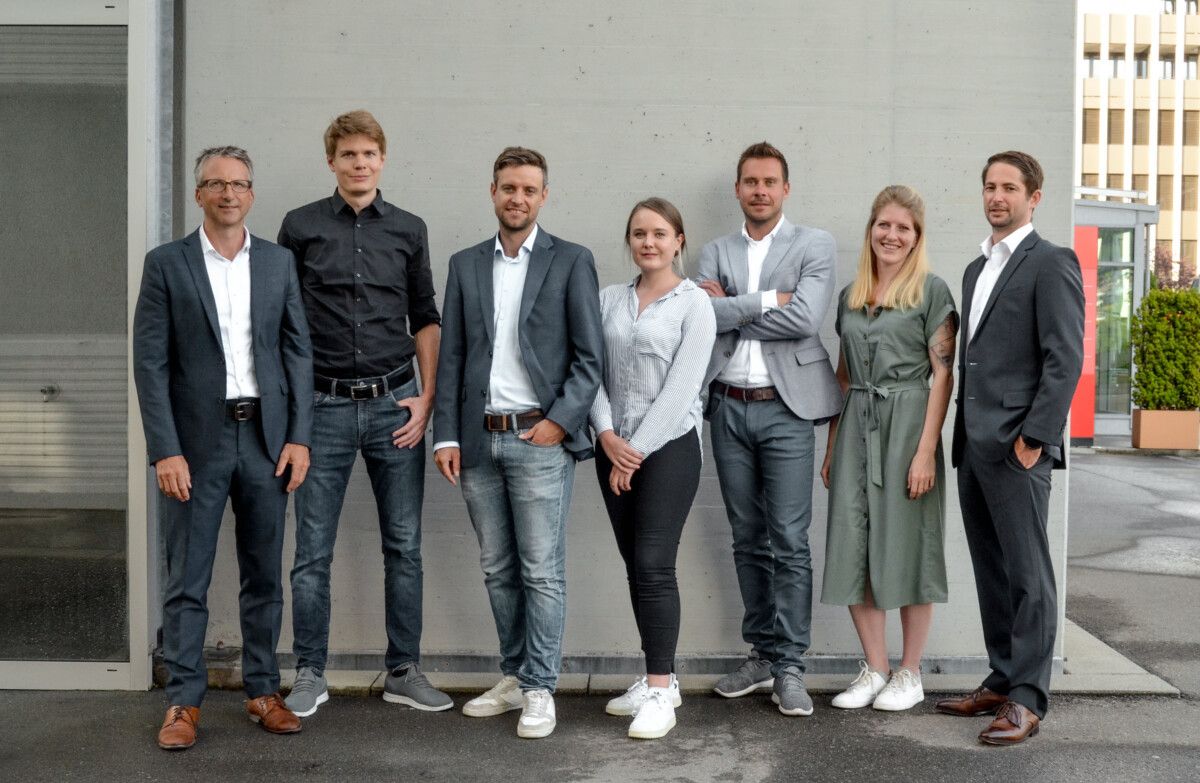PCMs are so-called phase change materials.
Similar to water at 0°C, our materials melt and solidify at a defined temperature (phase transition temperature). A great amount of heat can be absorbed, stored and released again during this process. Our core expertise is to adjust the phase transition temperature so that the materials are suitable for use in heating and hot water systems.
Nowadays, heat is usually stored by heating up a water tank and cooling it down again. The heat is therefore stored in this temperature difference.
PCM technology makes it possible to store many times more heat in the same temperature difference. PCM storage tanks therefore have several times the storage capacity with the same storage volume.
Against the backdrop of the desired energy transition, we recommend switching to an environmentally friendly heating system - although this is not yet mandatory in some cantons.
The trend is towards renewable heating, primarily with a heat pump. As heating accounts for around a third of total energy consumption and all CO2 emissions in Switzerland, the federal government is aiming to switch from fossil fuels to renewable energy sources in the area of heat generation.
We recommend the use of a heat pump in combination with a photovoltaic system. Coupled with Cowa's storage technology, this is the most ecologically sustainable and economically cost-effective solution on the market in the long term.
Our products are particularly useful when a heat pump is in use and this is powered by renewable energy, e.g. photovoltaics. Heating is mainly required during the cooler night when there is no sun and therefore no photovoltaic energy available. It therefore makes sense to produce heat during the day and store it into the night. Conventional storage systems are often too small for this.
Cowa storage units make it possible to store more heat in the same space and thus keep the building pleasantly warm throughout the night with heat produced during the day.
The trend is moving towards renewable heating, e.g. with a heat pump powered by photovoltaic electricity (PV electricity). It is therefore advisable to produce heat with PV electricity during the day and to use it for heating at night.
The correct storage tank size is often also limited by the available space. If possible, the storage tank should be designed for the output of the heat pump. Our recommendation: 50 litres/kW
Calculation example for a typical detached house:
Heat pump thermal output: 10kW
Storage unit size with Cowa's technology: 10kW * 50l/kW = 500l
We recommend using our storage units in combination with a heat pump and ideally with photovoltaics. If this combination exists, the components should communicate with each other via existing industry standards such as SG-ready. Otherwise, Cowa storage units are integrated into the system in the same way as conventional storage units. Please contact your installation specialist or visit our website.
Technical rooms are often cramped and in the basement. The installation of a storage tank is limited by the often tight space conditions in general and above all by the standardised door width of 80 cm. Even our largest storage units are therefore narrower than 80 cm and still offer a very high storage capacity. Water tanks with a comparable storage capacity are significantly larger and cannot be installed.
And what's more: who wants to give up valuable space for a storage tank? Work with Cowa technology and use the space for something else.
Costs
Electric batteries are a useful addition to a heat storage system. However, large storage capacities are required for the heat, which means that electric batteries can quickly become very expensive.
Price for electric batteries: 1,100 - 1,500 CHF/kWh
Price for heat storage: 300 - 400 CHF/kWh
It is therefore advisable to store energy for heating and hot water requirements in heat storage units and to use the electric battery for other electricity requirements if necessary.
Long-term stability
Electric batteries lose their storage capacity over the years. Cowa's products are durable and maintain their storage capacity for 20 years.
Raw materials
Metals such as lithium, cobalt or nickel are often used in the construction of electric batteries. Mining these metals is very energy-intensive and pollutes the environment. Cowa's products are based on salt hydrates, which are often used in the food industry and are much easier to extract.
A cost-benefit calculation over the entire life cycle of a new heating system includes the ongoing operating costs in addition to the basic investment. It is noticeable that a heating system such as a heat pump, which is comparatively expensive to purchase, pays for itself after just a few years, as the energy and maintenance costs are significantly lower. Even with rising electricity prices, a heat pump is still cost-effective.
Example calculation for a detached house in the canton of Zurich with a heating oil consumption of 2,200 litres per year. The heat generator is used for heating and for the preparation of domestic hot water. The investments with an amortisation period of 20 years are included for all systems.
| Geothermal heat pump | CHF/Year | 3'522 |
|---|---|---|
| Air heat pump | CHF/Year | 3'826 |
| Heating oil | CHF/Year | 4'285 |
| District heating | CHF/Year | 4'410 |
| Natural gas | CHF/Year | 4'530 |
| Pellet | CHF/Year | 4'749 |
| Piece wood | CHF/Year | 4'760 |


